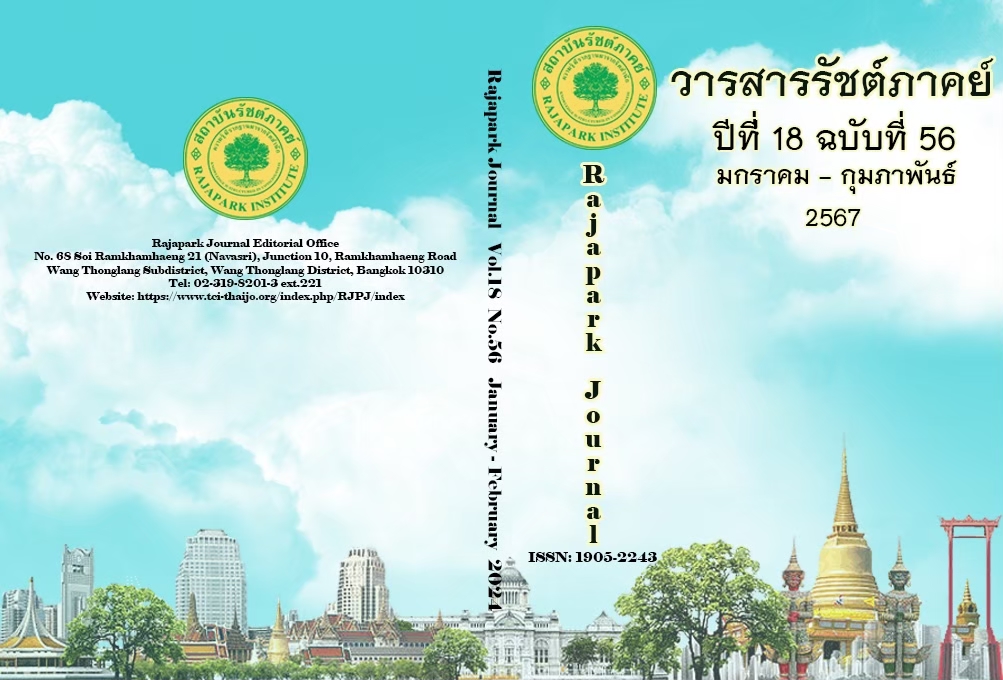An Evaluation of The Implementation Financial Stability of The Cooperative: A Case Study of Nakhonsawan Teacher’s Saving Cooperative Ltd.
Main Article Content
Abstract
The objectives of this research were to: 1) evaluate the trend of financial performance of Nakhonsawan Teachers Savings Cooperative Ltd. between 2012 and 2021. 2) conduct a comparative study of financial performance and the industry average (peer group) in 2021. 3) Exploratory main factors of financial ratios that affect the financial operations of the Nakhonsawan Teachers Savings Cooperative Ltd., by collecting secondary data from annual business reports of Nakhonsawan Teachers Savings Cooperative Ltd., calculating financial ratios according to the CAMEL Analysis concept applied by Cooperative Auditing Department, 17 ratios, analyzing trends, and comparing with industry averages. Component analysis using the Principal Component Analysis (PCA) and Orthogonal rotation using the Varimax method. The results showed that the evaluation of operating trends in financial stability during the period 2012 - 2021 has evaluation results at level 5 (very good 29.41%), level 4 (good 5.88%), and level 3 (satisfied 35.29%). The total cumulative percentage value is 70.59. The evaluation consequence is within a good range. The results of comparing financial ratios for the year 2021 with the industry average are comparable at level 5 (very good, 17.65%), level 4 (good, 11.76%), and level 3 (standards, 23.53%). The total cumulative percentage value is 52.94. Comparison consequences within a standard level. The main factors affecting the financial operations of the Nakhonsawan Teachers Savings Cooperative Ltd. consist of 2 factors: main factor 1, a factor of return on capital and asset turnover, and main factor 2, a factor of business growth rate.
Article Details

This work is licensed under a Creative Commons Attribution-NonCommercial-NoDerivatives 4.0 International License.
Views and opinions appearing in the Journal it is the responsibility of the author of the article, and does not constitute the view and responsibility of the editorial team.
References
Cooperative Auditing Department. (2001). Regulations of the registrar of cooperatives regarding the quality classification of loan debtors and provision for doubtful debts 2001. https://www.cad.go.th/ewt_dl_link.php?nid=44532
Cooperative Auditing Department. (2005). CAMELS analysis application guide for financial analysis of cooperative and farmer group 2005. https://www.cad.go.th/download/camels_apply.pdf
Federal Financial Institutions Examination Council. (1996). Uniform financial institutions rating system. https://www.ffiec.gov/press_register.htm.
Gulati, R., & Singh, N. (2019). Analysing bank stability in India: Evidence from 2007/08-2016/17. Journal of Applied Finance & Banking, 9(6), 1-7. https://ideas.repec.org/a/spt/apfiba/v9y2019i6f9_6_7.html
International Cooperation Alliance. (n.d.). Cooperative identity, values & principles. https://www.ica.coop/en/cooperatives/cooperative-identity
Kitbumrungrat, K. (2016). An analysis of data financial raito factors of agricultural cooperatives and non-agricultural cooperatives in 2015. Veridian E-Journal, Science and Technology Silpakorn University, 3(6), 29-42.
Mallick, S., & Das, S. (2020). Association between management capacity and profitability of scheduled urban co-operative banks in India. Indo-Asian Journal of Finance and Accounting, 1(1), 45-63.
Ngamwattanakul, K. (2018). Factor analysis of agricultural cooperative financial ratios in Chiang Mai Province. Rajabhat Chiang Mai Research Journal, 18(1), 79-92.
Panggabean, M. P. H., & Panggabean, S. B. (2019). Key determinants of Indonesia's banks financial performance. Jurnal Akuntansi dan keuangan, 21(2), 58-67. https://doi.org/10.9744/jak.21.2.58-67
Pituch, K. A., & Stevens, J. P. (2015). Applied multivariate statistics for the social sciences: Analyses with SAS and IBM’s SPSS (6th ed.). Routledge.
Puttaraksa, C. (2018). CAMELS analysis and factor analysis from financial information of agricultural cooperatives in Lampang Province. Journal of Modern Management Science, 11(1), 70-85.
Rahman, Z., & Islam, S. (2018). Use of CAMEL rating framework: A comparative performance evaluation of selected Bangladeshi Private Commercial Banks. International Journal of Economics and Finance, 10(1), 120-128.
Srichungprasert, K., & Sanont, R. (2020). Development of cooperative standards of canon's employee (Thailand) saving cooperative limited. Humanities and Social Science Research Promotion Network Journal, 3(1), 41-55.
Tapaneeyaworraworng, P. (2017). A factors analysis of saving cooperatives’ financial stability in northern. Burapha Journal of Business Management, 6(2), 105-115.
Teeyotragoon, P. (2018). An analysis of financial health of district agricultural cooperatives in Chiang Rai Province: by using financial indicators. Journal of Social Academic, 11(1), 52-62.
Vanichbuncha, K. (2009). Multivariate analysis (4th ed.). Dharmasarn.
Wei-Kang, W., Wen-Min, L., & Yu-Han, W. (2013). The relationship between bank performance and intellectual capital in east Asia. Quality & Quantity International Journal of Methodology, 47(2), 1041-1062.


